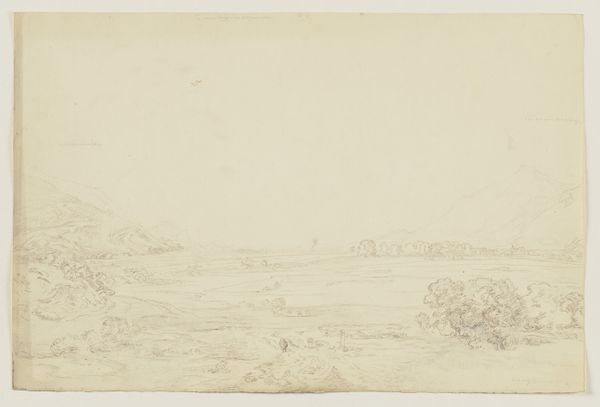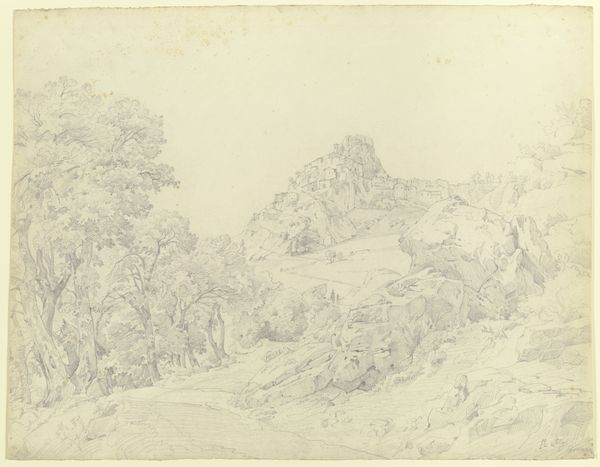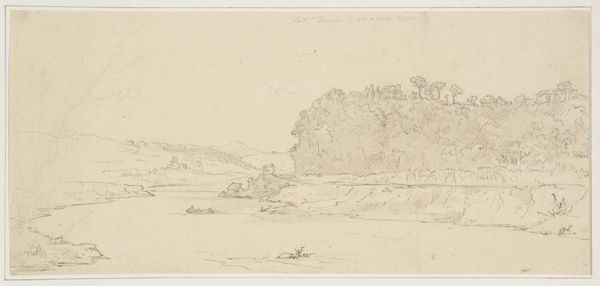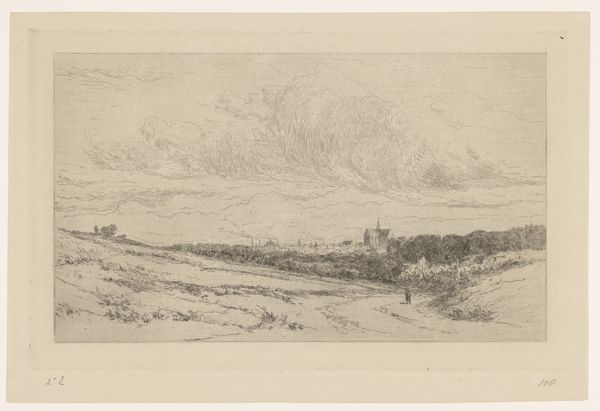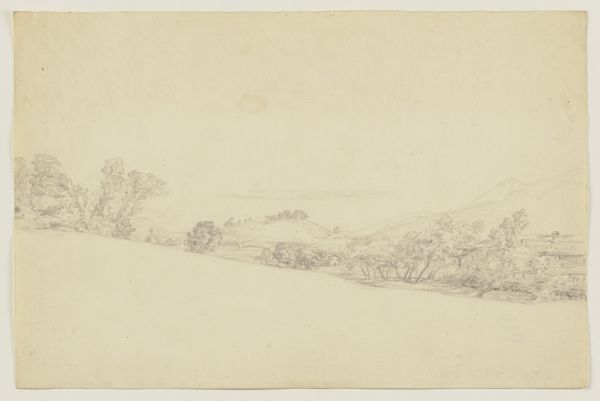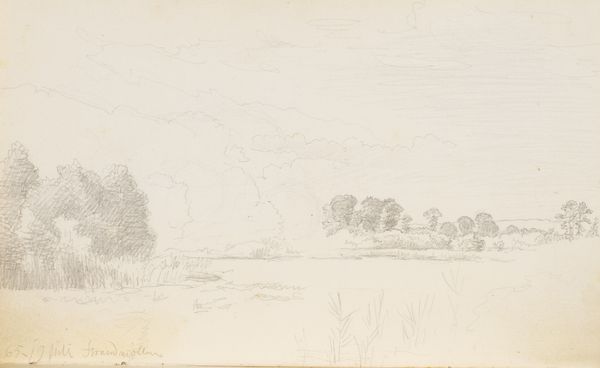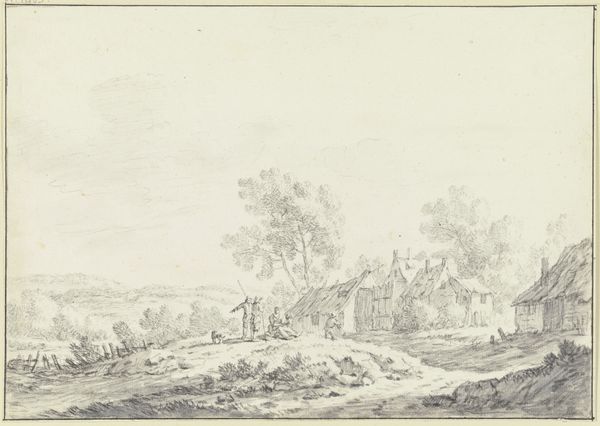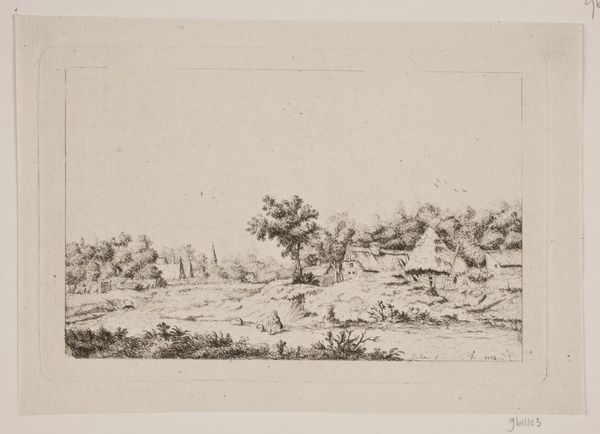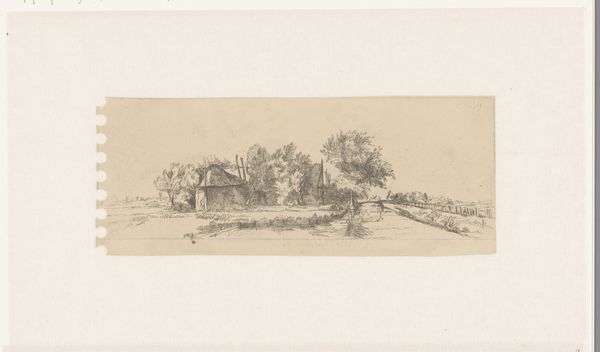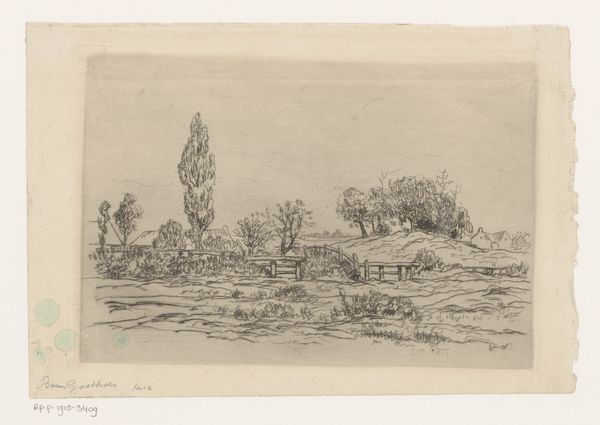
Copyright: Public Domain
Editor: So, we’re looking at "Landschaft um Villeneuve-lès-Avignon" by Carl Morgenstern, dating to 1841. It's a pencil drawing and it has a very quiet, almost contemplative feel. The distant town, nestled among the trees, really captures my attention. What do you see in this piece? Curator: I see a fascinating negotiation between the individual and the societal. Landscape painting during the Romantic era often positioned the viewer within nature to evoke feelings of awe and wonder. However, the inclusion of Villeneuve-lès-Avignon introduces the presence of civilization and, by extension, the societal structures that shape our lives. Editor: That's an interesting perspective. It moves beyond just a pretty scene. So, the inclusion of the town isn't just about realism? Curator: Not entirely. It's a visual representation of the evolving relationship between humanity and nature during the early 19th century. The burgeoning Industrial Revolution was already impacting the landscape. How might an artist portray that shift without heavy-handed industrial imagery? Editor: So, the subtlety is the key. It's not about factories, but the gentle encroachment of society on the natural world? Curator: Precisely. Consider also how museums at this time were increasingly democratizing access to art. Landscapes like these gave audiences a relatable entry point, while still conveying deeper cultural meanings. The very act of sketching en plein air also points to this new democratized possibility for experiencing art. Editor: That’s really given me a new appreciation for it! It is more than just a landscape drawing. Curator: Absolutely. By exploring the artwork's social context, we can better understand its place within broader cultural narratives and how artists engaged with the changing world around them. It reveals a story that a simple aesthetic appreciation would overlook.
Comments
No comments
Be the first to comment and join the conversation on the ultimate creative platform.


